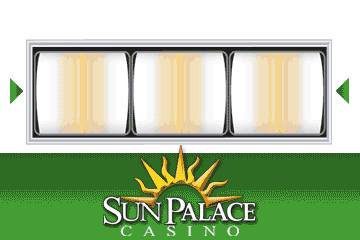|
7-card Stud: Small Limit vs. Big Limit
By: Guy Downs
As everyone knows, big poker games – with high betting limits – are played differently to small games. But when it comes to 7-card Stud, this difference is even more pronounced than in games like Hold‘em and Omaha .
Why? Because in 7 Stud, unlike in flop games, the amount of the ante becomes proportionately bigger as the betting limits increase. Barring a few odd variations, the big blind in Hold‘em is always the size of one small bet, and the small blind is usually half a small bet. This means that in a ten-handed game it’s going to cost you 15 per cent of a small bet to see each hand – something that’s true whether you’re playing $4/$8 or $400/$800. In stud, however, the size of the antes and bring-in become bigger relative to the betting limits, as the limits increase.
What does this mean to you, the stud player? Simply put, it means that you need to make some fairly radical strategy adjustments in order to move from one limit to another - in particular on 3rd street. In a big stud game, the size of the antes and bring-in is so big that it’s often worth raising - or even re-raising - on 3rd with what you’re fairly sure is the second-best hand, to increase your chances of winning the pot.
For example: let’s say you’re playing in a $15/$30 game, and are dealt the 7 -K -K in the hole with the 7 in the hole with the 7 showing. It’s folded to the player on your right, who raises with the T showing. It’s folded to the player on your right, who raises with the T showing. If you think you can get the pot headsup by re-raising, you should do so. You’re not much of an underdog against a pair of Tens, and the ‘dead money’ in the pot makes your hand profitable to play. However, with a vulnerable hand like split Seven’s with a King kicker, you’d like to play headsup against a probable pair of Tens, since if more players contest the pot, your chances of winning the pot decrease faster than your expected profit increases. showing. If you think you can get the pot headsup by re-raising, you should do so. You’re not much of an underdog against a pair of Tens, and the ‘dead money’ in the pot makes your hand profitable to play. However, with a vulnerable hand like split Seven’s with a King kicker, you’d like to play headsup against a probable pair of Tens, since if more players contest the pot, your chances of winning the pot decrease faster than your expected profit increases.
As a rule, ‘big stud’ is a game where your primary objective is to knock other players out of the pot. Obvious exceptions include drawing hands like three-flushes on 3rd, although even then you may want to play the pot short-handed if your three-flush includes an Ace or a King.
Small stud, in contrast, tends to be more of a trapping game. Since most little stud games are played with a spread limit, and no antes, there’s virtually no money in the pot before the action commences on 3rd. Thus, a second- or third-best hand is getting nothing in the way of pot odds, and should therefore frequently fold.
 |
| Sun Palace Casino offers great bonuses and promotions |
If you were playing $2 to $10 stud, for example, with no ante and a $2 bring-in, you should almost always fold a hand like (K -7 -7 ) 7 ) 7 if someone with the T if someone with the T raises the maximum on 3rd. Your odds of winning the hand haven’t changed, but your reward for winning is significantly smaller. With just the $2 bring-in, you’re only going to get even money from the pot to try and run down a pair of Tens. This isn’t enough to make the play profitable, which means you should fold. raises the maximum on 3rd. Your odds of winning the hand haven’t changed, but your reward for winning is significantly smaller. With just the $2 bring-in, you’re only going to get even money from the pot to try and run down a pair of Tens. This isn’t enough to make the play profitable, which means you should fold.
Since virtually nobody’s getting the proper pot odds to see 4th street with a second-best hand in a small stud game, you should usually try and trap your opponents if you have a good hand on 3rd.
In the $2 to $10 game, for instance, you should probably only raise to $4 or $5 with a hand like (K -8 -8 ) K ) K if everyone has folded to you. You’d like to get action here from a hand like (Q if everyone has folded to you. You’d like to get action here from a hand like (Q -T -T ) 8 ) 8 , or (4 , or (4 -J -J ) 4 ) 4 , yet these hands will probably fold if you make it $10 to go. Make a smaller raise, and give these hands a chance to hang themselves. If you get a gaggle of callers on 3rd, it’s still not a disaster, since you can always raise the maximum on 4th and destroy your opponents’ pot odds. , yet these hands will probably fold if you make it $10 to go. Make a smaller raise, and give these hands a chance to hang themselves. If you get a gaggle of callers on 3rd, it’s still not a disaster, since you can always raise the maximum on 4th and destroy your opponents’ pot odds.
Another strategy adjustment you should make in a small stud game is to play more hands on 3rd than you would in a bigger stud game, so long as it costs close to the minimum to see 4th. If you have a hand like (7 -6 -6 ) 7 ) 7 , and your hand is completely live, it’s usually correct to see you have several other callers. This is because your investment is minimal (remember, you should only make this play when it costs you the minimum to continue) and you stand to win a big pot if you catch good on 4th. If you don’t improve on 4th, though, you should be prepared to fold if anyone makes a sizable bet. , and your hand is completely live, it’s usually correct to see you have several other callers. This is because your investment is minimal (remember, you should only make this play when it costs you the minimum to continue) and you stand to win a big pot if you catch good on 4th. If you don’t improve on 4th, though, you should be prepared to fold if anyone makes a sizable bet.
(© 2005 BluffMagazine. All Rights Reserved. This material may not be published, broadcast, rewritten, or redistributed)
|










